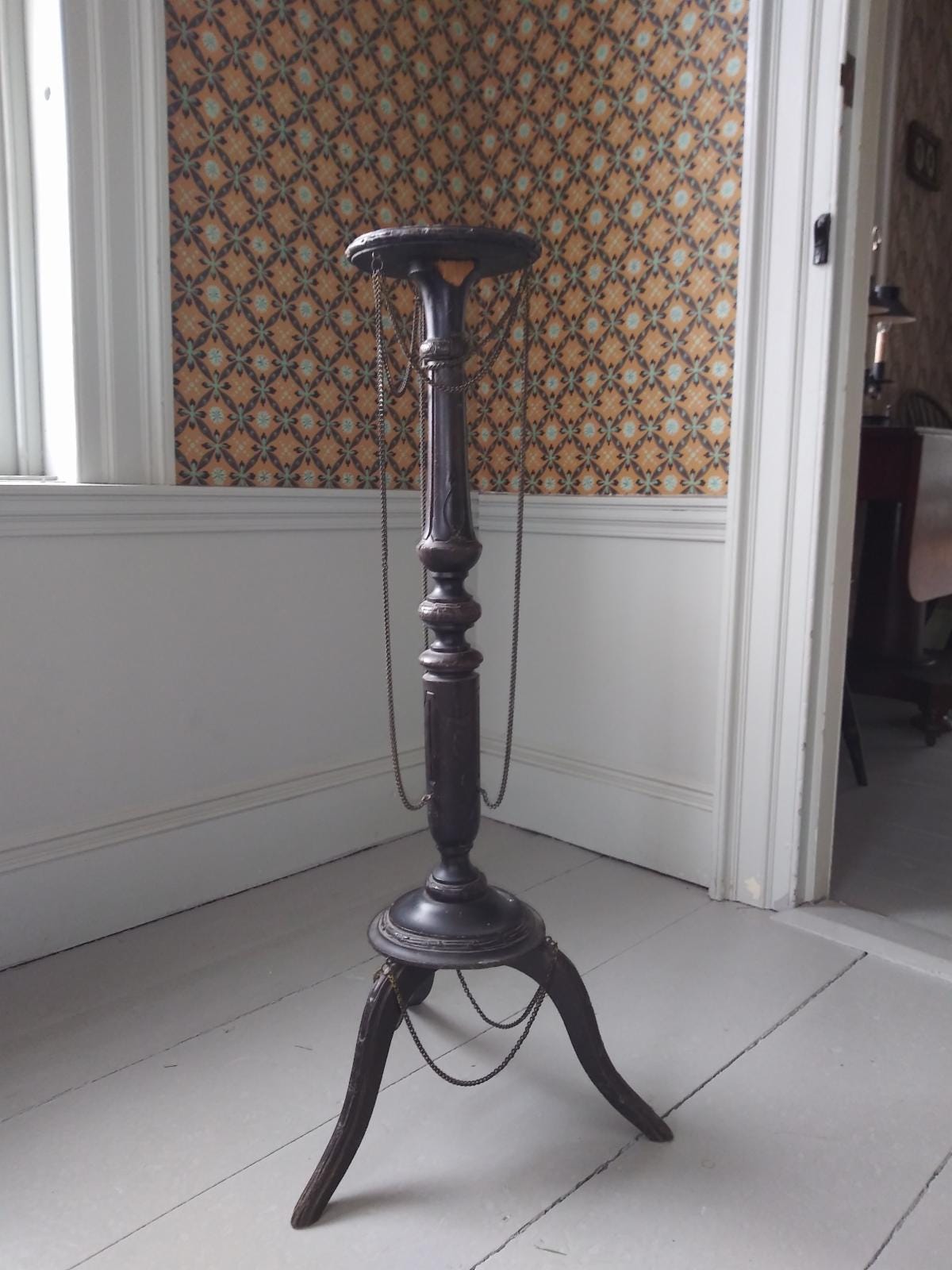Is it a table? Is it a plant stand?
ACHC Collection #1967.011.1
No, it’s a monkey stand!
A what? Yes, in today’s world, when cats and dogs are our closest animal companions, you might be surprised that in Victorian times, monkeys were the favored pet of the British elite.
First brought to Britain by traders and sailors who traveled to India and Africa, monkeys were considered as very fashionable pets, despite their tendency to mischief! Monkeys were treated like young children and provided considerable amusement with their antics.
Young Girl Holding a Monkey by Rosalba Carriera, 1721. Musée du Louvre, Paris
Still available today, Notes on Pet Monkeys and How to Manage Them by Arthur Patterson (1888) offers advice on anything you need to know about caring for your monkey. It even includes tips on suitably simian names - recommending “Bully, Peggy, Mike, Peter, Jacko, Jimmy, Demon, Barney, Tommy, Dulcimer, Uncle or Knips.”
Monkeys aren’t easy to manage. Another author of the era, M. G. P. Fermor in Home Pets Furred and Feathered, warned that “Their capacity for mischief and insatiable curiosity are things that have to be reckoned with.” He suggested that cages should be built or “If just one monkey was to be kept, it could be attached to a light, strong chain, which should be affixed to something it couldn't drag around.”
The Monkey Stand in our collection provides a perfect place for a pet monkey to be on display in one’s parlor while serving tea to guests. The linked chains would be used to attach to a belt around the monkey’s waist so it couldn’t escape and cause mischief.
Want to read more about pet monkeys? Please note that pet monkeys are illegal in all New England states!
https://www.geriwalton.com/tales-of-monkeys-as-pets/
Do you have a pet keeping you company?






